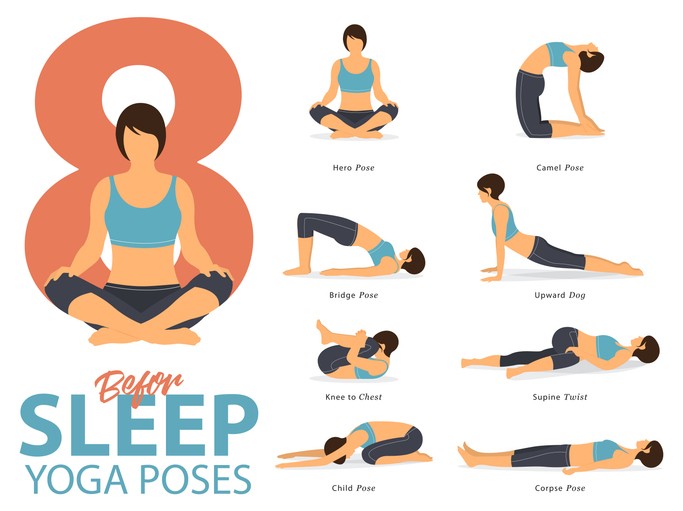🧘♀️ Evening Yoga Practice for Better Sleep
At the end of a long day, gentle yoga can be the perfect way to prepare your body and mind for a restful night of sleep.
🧘♂️ "Yoga promotes relaxation and calms the mind," says Dr. Vanika Chawla, Stanford School of Medicine.
Studies show yoga can:
-
Improve sleep quality
-
Help people with insomnia fall asleep faster
-
Reduce nighttime awakenings
Deep breathing, a core element of yoga, helps downshift the nervous system—turning off that high-alert “fight-or-flight” mode, says Dr. Elizabeth Ko of UCLA.
Bonus: Yoga counteracts aches from sitting all day and reduces stress.
"Yoga is a bridge between our daily chaos and inner calm," says Steph Creaturo, yoga instructor in Brooklyn.
The Connection Between Yoga and CBT-I (Cognitive Behavioral Therapy for Insomnia)
Mind-Body Connection
CBT-I increases awareness of thoughts that affect sleep; yoga builds mindfulness and body awareness.
Relaxation Training
Both include progressive muscle relaxation techniques.
Routine Establishment
CBT-I encourages a regular schedule. Evening yoga becomes a reliable cue for winding down.
Stress Reduction
Both help reduce racing thoughts and anxiety that disrupt sleep.
"Yoga’s mindfulness beautifully complements CBT-I’s cognitive restructuring," says Dr. Michael Breus, sleep psychologist.
Evening Yoga Sequence for Better Sleep
1. 🔄 Gentle Warm-Up (5 minutes)
-
Seated Neck Rolls
-
Seated Side Stretches
-
Cat-Cow Stretch
2. 🧘 Gentle Flow (8 minutes)
-
Child’s Pose ↔️ Downward Dog
-
Standing Forward Fold
-
Gentle Standing Twist
3. 🛏️ Restorative Poses (7 minutes)
-
Supported Bridge Pose
-
Legs Up the Wall
-
Reclining Bound Angle Pose
4. 🧘♀️ Final Relaxation with Yoga Nidra Breathing (5 minutes)
-
Corpse Pose with 4-7-8 Breathing
🎥 Recommended Video Resources
Bedtime Yoga for Better Sleep – Yoga with Adriene
Yoga for Bedtime – Yoga with Kassandra
Gentle Yoga for Sleep – Sarah Beth Yoga
Yoga for Insomnia – Yoga Journal
Evening Yoga for Stress Relief – Fightmaster Yoga
🌟 Implementing Your Evening Yoga Practice with CBT-I
Consistent Timing: Practice yoga at the same time every evening.
Prepare Your Space: Dim lights, reduce clutter, create a sleep-friendly environment.
Digital Detox: Avoid screens before practice, following CBT-I’s stimulus control guidelines.
Thought Journaling: Clear your mind post-practice with a short reflection or brain dump.
Sleep Restriction Sync: If you're doing CBT-I sleep restriction, yoga helps fill the awake hours meaningfully.
References
Wang, F., et al. (2020) | Trauer, J.M., et al. (2015)
Datta, K., et al. (2021) | Neuendorf, R., et al. (2015)
Hauri, P. (2000)
Final Thought
Consistency is your secret ingredient. You don’t have to do all 20 minutes—start with 5 or 10. What matters is showing up.
💬 "The goal isn’t perfect poses—it’s creating a calming ritual that gently transitions you into sleep," reminds Dr. Chawla.







